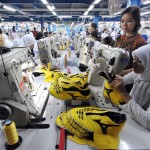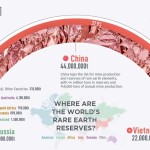Total number of posts 461.
 Since the US-China Trade War began in January 2018, Vietnam has quickly established itself as a favorable alternative to China. As such, identifying local manufacturers that are qualified to make target components or products is one of the primary objectives of investors coming to Vietnam. Here, we will help investors understand Vietnam’s industrial landscape and how to approach the supplier network in the country.
Since the US-China Trade War began in January 2018, Vietnam has quickly established itself as a favorable alternative to China. As such, identifying local manufacturers that are qualified to make target components or products is one of the primary objectives of investors coming to Vietnam. Here, we will help investors understand Vietnam’s industrial landscape and how to approach the supplier network in the country.
Industrial clusters
Vietnam’s manufacturing industry is driven by several key sectors: textile and garment, electronics, and mechanical engineering.
Textile and garment
Vietnam has risen to become the third-largest manufacturing hub of textile and garments, just after China and India. Vietnamese textile and garment companies mainly focus on the garment processing stage, which accounts for 85 percent. The main manufacturing method is CMT, which means cut-make-trim.
The industry comprises of around 7,000 companies employing 2.7 million people. Large firms are surrounded and dominated by small and medium-sized enterprises (SMEs). These firms are concentrated in the Red River Delta and the Southeastern region.
Electronics
The electronic cluster is non-resource and export-oriented. The industry consists of around 2,500 companies, employing about 800,000 people. Supply chains in this cluster consist of many tier-2 companies supplying components and parts to foreign companies. Investors come from South Korea and Japan and consist of companies such as Samsung and Nokia. We have seen large investments in the Saigon Hi-Tech Park with companies also in the Red River Delta region.
Mechanical engineering
Vietnam’s mechanical industry has strengths concentrated in three sub-sectors including motorcycles and motorcycle spare parts, household mechanics and tools, and auto and auto parts. The whole country has more than 24,000 metal processing and engineering companies. The Red River Delta region such as Hanoi and Hai Phong cater to original equipment manufacturer (OEM) suppliers. In the central region, Quang Nam province has seen an increase in auto parts production. In the south, mechanical clusters are concentrated in Dong Nai and Binh Duong provinces.
Raw materials
Despite the strong development of the supporting industries in recent years, Vietnam is yet to acquire the necessary resources. A large amount of raw materials is still imported.
Textile
Vietnam needs fiber import, as the domestic supply can only meet 1 percent of demand. In contrast, the total output of yarn is 2 million tons per year, which surpasses domestic demand. Two-thirds of this output is exported to other countries. However, due to Vietnam’s inefficiency in weaving and dyeing, under-developed technology, and sub-standard designs, 65-70 percent of textiles to supply the industry in Vietnam needs to be imported from China, Taiwan, and so on.
Plastic
Despite strong developments in recent years, Vietnamese plastic manufacturers still have to import a large portion of raw materials. In particular, the plastic industry imports about 4 million tons of plastic materials to serve domestic production. Plastic materials imported are plastic resins, plastic powder, and additives. Main imported materials include PE, PP, PET, PVC, PS, ABS, etc. Vietnam mainly imports plastic materials from Saudi Arabia, South Korea, Taiwan, Thailand, and China.
Steel
Vietnam’s steel industry is also dependent on imported inputs and unbalanced development between construction steel and mechanical steel. Production outputs are mainly construction steel, steel coil, and steel pipes.
Due to the fragmentation of the industry, poor investment in technology and production facilities, steel manufacturers, and even large corporations in Vietnam (Vietnam Steel Corporation, Hoa Phat Corporation, or Formosa Corporation) only focus on these products.
The domestic steel industry is unable to produce steel for mechanical engineering as those products have stricter technical requirements. Therefore, mechanical engineering companies still import a significant amount of steel from China, Japan, and South Korea as input for production.
Aluminum
Bauxite is the main source of aluminum. Currently, more than 40 countries possess bauxite resources, of which Vietnam possesses the third-largest national bauxite reserves with 2.1 billion tons. However, the country still counters a number of difficulties in bauxite extraction and aluminum smelting in terms of geographical features, infrastructure, and technology. Hence, materials for aluminum casting in Vietnam are mainly imported from other countries.
Supporting industrial companies
Supporting industrial companies can be divided into two main groups: domestic companies and FDI companies. Domestic companies account for a relatively small portion (16 percent) compared to FDI companies that dominate the market. Each group has its own strengths and weaknesses that may affect an investor’s decision when sourcing in Vietnam.
FDI manufacturers
FDI companies account for a very large portion of manufacturers in Vietnam. Such companies have a larger online presence and are easily searchable in online searches. Such companies tend to be larger suppliers, with a larger production scale, better infrastructure, and advanced technology. However, such large companies have little interest in working with small buyers.
Most FDI companies are proficient in English and typically come from Japan, South Korea, and Taiwan.
Vietnamese manufacturers
On the other hand, while Vietnamese companies account for a smaller portion they seem favorable to foreign buyers due to their reasonable prices compared to larger FDI companies. These companies are however not easy to find because of a small online footprint and poor English proficiency in communicating.
Many Vietnamese companies are small and medium-sized enterprises with medium production scale and capacity, lacking advanced technology. Their products are able to meet foreign buyers’ standards but either can not or are not willing to invest in audit programs such as the Walmart audit programs. However, Vietnamese companies are willing to accept smaller orders, are flexible, and have a willingness to learn and adapt to new technology. Vietnamese companies are therefore inexperienced rather than lacking funds or knowledge.
How to approach a supplier network in Vietnam?
Investors can approach supplier networks through local chambers of commerce and industry, which are active in large cities in Vietnam. Foreign investors can also attend various trade fairs and workshops. These are typically held every month in key economic cities, attracting significant Vietnamese manufacturing companies that have enough production capacity and are looking for new clients.
Investors can also attempt to source Vietnamese businesses directly, using sites such as Alibaba.com or even online searches. However, Vietnam-based sourcing companies or consulting companies would be able to provide more value in Vietnam, compared to more developed manufacturing countries like China.
Local sourcing companies use their local network and experts to match the investor with a qualified supplier. Investors should also due their due diligence in finding reliable sourcing companies, as there are some who are not actual sourcing companies but traders, which have different roles.
Sourcing companies provide all the required information about manufacturers, including the company’s profile, production capacity, key contact person, sample cost, MOQ requirements, certifications, and so on while traders do not.
Further, sourcing companies can support you with a factory tour, supplier background check, or even testing and logistics via a third party. Some companies will offer these services as an all-inclusive package, while others charge based on project milestones or individual services.
Source: Vietnam Briefing














